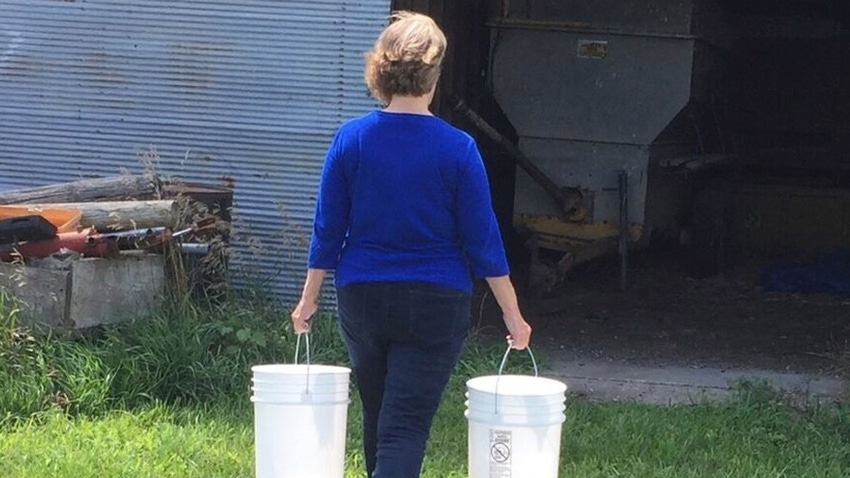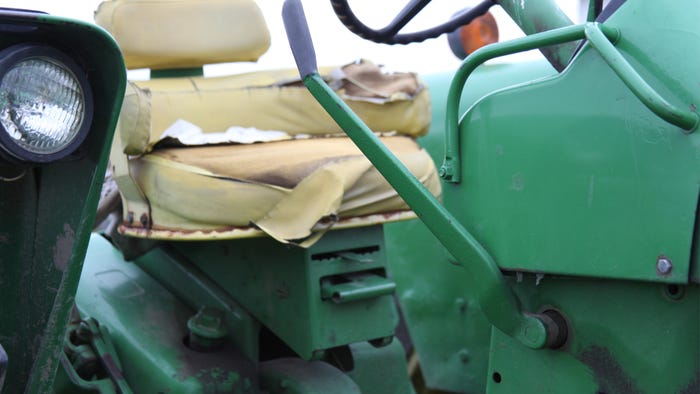April 19, 2024

Editor’s note: For a Spanish version of this story, click “Download now” at the top or bottom of this page.
by Ellen Duysen
Oh, my aching back! This utterance is commonly heard on farms, ranches and in dairy parlors.
According to one study, 75% of livestock workers reported muscle or skeletal pain in at least one part of their body over a one-month period, with the majority indicating that they had back pain. Some of the many causes of back pain are listed below:
Heavy lifting. Anyone who has worked in agriculture knows it involves lifting heavy objects such as feed and seed bags, equipment, buckets, bins, barrels, livestock, pipe, produce, and the list goes on.
Improper lifting techniques and weak and tired muscles can lead to musculoskeletal injuries. A muscle strain occurs when muscles are stretched beyond their normal capacity or torn, leading to pain, stiffness and swelling.
Improper lifting can also cause pain in your ligaments, the bands of tissue that connect bones and help to stabilize your joints. Lifting heavy objects may cause the discs in your vertebrae to bulge, herniate or rupture, leading to localized back pain and pain in your legs.
Vibration. Vibration, such as that experienced from sitting for long periods in a tractor, can lead to muscle fatigue and strain in your back and spine and can cause trauma to muscles and ligaments.
Slips, trips and falls. Falls resulting from slips and trips on wet and slippery surfaces, bad tractor steps, and cluttered shop floors can result in severe back injuries.
Dehydration. You may not have considered the effect of hydration on muscle and back pain. Dehydration can lead to electrolyte imbalances that can increase the risk of muscle cramps and spasms, including in the back muscles.
Prevent the pain
By following these simple, low-cost prevention measures, you can head off back pain:
Proper lifting techniques. Keep a wide base of support. Bend at your knees, not at your waist. Keep the object close to your body. Pivot with your feet. Do not twist with your back. Lift with your legs, not your back. Take advantage of gravity and momentum.
Find a visual guide to proper lifting at cpwr.com.
Replace tractor seats and steps. Consider replacing your worn-out tractor seat with one that has good padding and suspension, which will help absorb shocks and support your back. And while you are fixing up that tractor, replace that smooth, worn-out step with one that has a non-slip surface.

REPLACE THE SEAT: If your tractor seat looks like this, it’s time for a replacement to help take the strain from your back while operating the tractor during long hours in the field or farmyard.
Anti-vibration gloves. Wearing anti-vibration gloves can help reduce vibration transmission from the tractor's controls to your hands and arms.
Frequent stretching and water breaks. Taking regular breaks, drinking water to stay hydrated and performing stretching exercises can help alleviate muscle fatigue and tension in your back. Check out Nebraska AgrAbility's Farmer Stretching resource at agrability.unl.edu.
Check your posture and boots. Proper posture can help reduce strain on the back and promote spinal alignment. Prevent back-injuring slips by wearing boots with good tread. Peek at your soles now to see if you need to invest in new boots. Wearing footwear with good support can help reduce muscle fatigue and back pain.
Consult your health care professional. Consult with a health care professional for persistent back pain.
Duysen is a research assistant professor at the UNMC College of Public Health and is coordinator of CS-CASH.
You May Also Like




